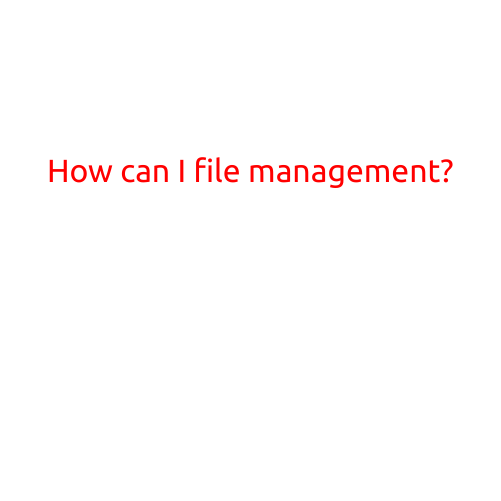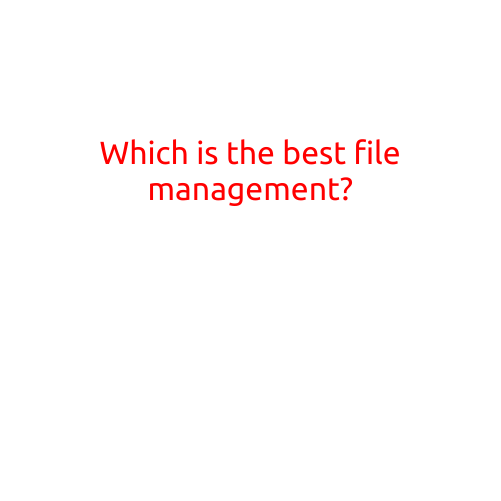
How Can I File Management?
Effective file management is a crucial aspect of staying organized and productive in both personal and professional life. With the vast amount of digital data and physical files we accumulate every day, it’s easy to get overwhelmed and struggle to find the information we need when we need it. In this article, we’ll explore the best practices for file management, helping you to streamline your workflow, reduce stress, and save time.
Why is File Management Important?
Before we dive into the specifics of file management, let’s take a look at why it’s so important.
- Reduces Stress: With a clear and organized system, you’ll be able to find what you need quickly and easily, reducing the stress of searching for lost documents.
- Saves Time: Proper file management saves time by preventing the loss of valuable information and eliminates the need for duplicate work.
- Improves Productivity: By keeping your files organized, you’ll be able to focus on the tasks at hand, rather than wasting time searching for misplaced information.
- Enhances Security: By following best practices for file management, you’ll be able to ensure that your sensitive information remains secure and protected from unauthorized access.
Best Practices for File Management
So, how do you get started with effective file management? Here are some best practices to follow:
- Organize Your Files: Start by creating clear and descriptive file names and categorizing your files into folders and subfolders. This will make it easy to find what you need when you need it.
- Use a Consistent File Naming Convention: Establish a consistent file naming convention to ensure that your files are easily searchable.
- Store Files in a Central Location: Designate a central location for your files, such as a shared drive or cloud storage service. This will make it easy to access your files from anywhere.
- Use Search Functions: Take advantage of search functions, such as Google Drive’s search bar, to quickly locate files.
- Keep Files Up-to-Date: Regularly update your files to ensure that you’re working with the latest information.
- Back Up Your Files: Regularly back up your files to prevent data loss in the event of a computer crash or other disaster.
- Purge Unnecessary Files: Periodically review your files and purge any unnecessary documents to keep your digital clutter to a minimum.
Digital File Management Tools
There are many digital file management tools available, each with its own set of features and advantages. Here are some popular options:
- Google Drive: A cloud storage service that allows you to store and access your files from anywhere.
- Microsoft OneDrive: A cloud storage service that allows you to store and access your files from anywhere, with integration with Microsoft Office.
- Dropbox: A cloud storage service that allows you to store and access your files from anywhere.
- Evernote: A note-taking app that allows you to store and organize your files, with search and tagging features.
Physical File Management
While digital file management is important, physical file management is also crucial. Here are some tips for managing your physical files:
- Create a Filing System: Establish a filing system, such as alphabetical or categorical, to make it easy to find what you need.
- Use Labels and Categories: Use labels and categories to categorize your physical files and make them easy to find.
- Store Files in a Safe Location: Store your physical files in a safe and secure location, such as a file cabinet or safe.
- Shred Unnecessary Documents: Periodically review your physical files and shred any unnecessary documents to keep your physical clutter to a minimum.
Conclusion
Effective file management is a critical aspect of staying organized and productive in both personal and professional life. By following the best practices outlined in this article, you’ll be able to streamline your workflow, reduce stress, and save time. Whether you’re working with digital or physical files, remember to stay organized, use search functions, and regularly back up your files to ensure that you’re working with the latest information.





